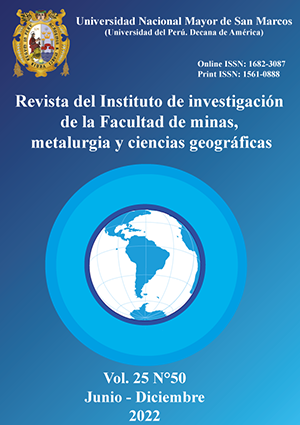Culture of risk prevention at the University Enrique Guzman y Valle–La Cantuta
DOI:
https://doi.org/10.15381/iigeo.v25i50.21639Keywords:
security management tools, IPERC, prevention culture, work protocolsAbstract
This article, under a documentary review, analyzes the importance of the implementation of security management tools in a higher education institution, through a sample of twenty-eight (28) teachers, through the administration of evaluation surveys. The research carried out is non-experimental, descriptive-correlational. Conclusion, it is evident that the implementation of safety management tools such as the safety plan, hazard identification, risk assessment and control (IPERC), work protocols, among others, allowed improving the teacher's work environment, through knowledge of your risks to which you are exposed in the workplace and the actions to be taken to eliminate or minimize the risk factor. In addition, the awareness of the presence of the teacher in carrying out the development of the plan and program of security of the university. The continuity of periodic evaluations is recommended to measure the evolution of the culture of prevention and to adjust the use and/or implementation of management tools based on the result of the evaluation, generating the establishment of a circular intervention model against the safety and health of teachers.
Downloads
Published
Issue
Section
License
Copyright (c) 2022 Rosabel Calderón-Pacheco, Nora Malca Casavilca

This work is licensed under a Creative Commons Attribution 4.0 International License.
AUTHORS RETAIN THEIR RIGHTS:
a. Authors retain their trade mark rights and patent, and also on any process or procedure described in the article.
b. Authors retain their right to share, copy, distribute, perform and publicly communicate their article (eg, to place their article in an institutional repository or publish it in a book), with an acknowledgment of its initial publication in the Rev. Inst. investig. Fac. minas metal cienc. geogr.
c. Authors retain theirs right to make a subsequent publication of their work, to use the article or any part thereof (eg a compilation of his papers, lecture notes, thesis, or a book), always indicating the source of publication (the originator of the work, journal, volume, number and date).























